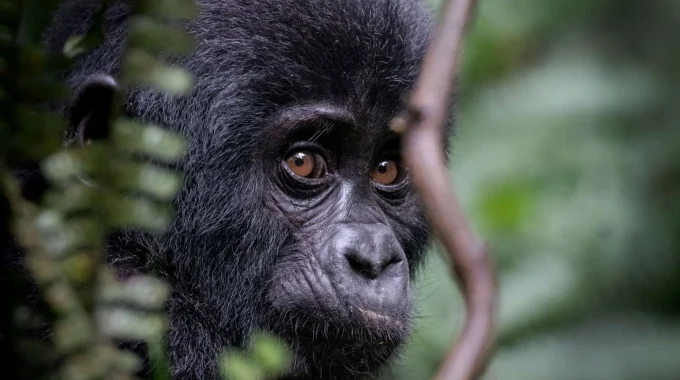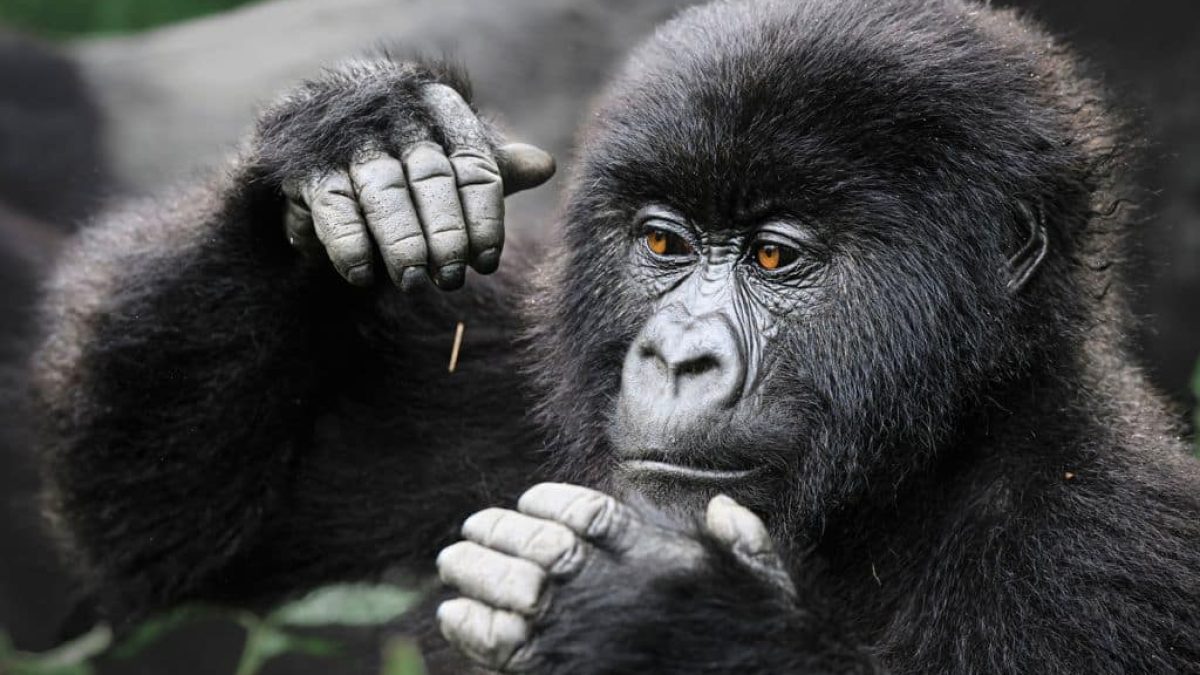
Everything You Need to Know about trekking with Mountain Gorillas
Everything You Need to Know about trekking with Mountain Gorillas
Mountain gorilla trekking is often on top of travelers bucket list only rivaling with the Big 5 Game Safari in Kruger National Park and Serengeti. Which is totally understandable, getting to the gorillas takes more effort, more time and more expense than a traditional safari.
Here is everything you need to know about trekking gorillas with mountain gorillas in Rwanda and Uganda.
Where do the mountain gorillas live?
There are only two populations of mountain gorillas left in the world, one population is found in the Virunga Volcanic Mountains of Central Africa, with groups scattered between Uganda, Rwanda and the Democratic Republic of the Congo. The second gorilla population lives in the deep forests of Bwindi Impenetrable National Park.

According to the 2018 census, over 604 mountain gorillas live in the Virunga Mountains. Combined with a mountain gorilla population living in Bwindi Impenetrable National Park in Uganda, brings the number of mountain gorillas to more than 1,064 individuals. The rise in the mountain gorilla population follows the introduction of park guards, veterinary care, community support projects and regulated tourism.
Despite the rise in the population and all the conservation efforts, mountain gorillas are still listed as endangered.
What options do I have to see the mountain gorillas?
Visiting mountain gorillas as a group can be quite expensive and going solo is often even more so. These animals exist only in extremely remote locations, in countries not known for their tourist infrastructures, meaning the logistics of a gorilla visit are a challenge in themselves. Also, tour groups must pay permits for expert guides to lead them through Virunga, Mgahinga, Bwindi or Volcanoes National Park.
Just like most wildlife encounters in Africa, gorilla trekking experience is completely worth it, and it will leave you everlasting memories and appreciation for nature. It is also worth noting that the cost of a gorilla permit to trek in Rwanda’s Volcanoes National Park is USD 1,500, which makes a trekking permit in Uganda around a third of the price, and a far more budget freely option.
What to Expect on your trek
It is important to know what you are getting into before setting out on a gorilla trek. The hike through the forest looking for mountain gorillas is challenging and tough-going (your guides will often to make path by machete through the ferns that clog the undergrowth, but it is within reach for anyone with a reasonable level of fitness.
You will get muddy though, and sweaty. Beneath the forest canopy the humidity is very high, and it is a good idea to bring some bottled mineral water to hydrate as you go.
If you are particularly concerned about the terrain, consider hiring a local porter. The porters will carry your bag, and help you to navigate some of the steeper, or trickier sections of the trek. In fact, hiring a porter on a gorilla trek is a common practice by travelers of all ages and abilities. Not only does it make the trek easier for you, but you are also providing a valuable source of employment for locals. The minimum cost for hiring a porter on a gorilla trek in Bwindi Impenetrable National Park is USD $20, OR USD $10 in Virunga. Of course you can choose to provide a tip in addition to that.
Eventually, after making your way through the scrub, you will come across a gorilla family, peacefully playing in a forest clearing. Your trekking guides and ranger will have prepared you for what to expect. There is no direct interaction with the gorillas (unless one moves past you), but you should get pretty close. You will have a good 45 minutes to an hour to just sit and observe these animals in their natural habitat.
Being in presence of a mountain gorilla family is something you will never forget.
Mountain Gorilla Habitat
Mountain gorillas live way up in the cloud forests, ranging from an altitude of 2200 metres to 4300 meters (a not insignificant height – you may feel a little short of breath. Remember to let your guide known if you feel a headache coming on).
The vegetation on the lower slopes will be dense, often a mix of bamboo, ferns and gallium vines. As you climb, the undergrowth should thin out a bit. The zone where the gorillas live is misty, damp and (depending on the time of year) can be a bit cold. Mountain gorillas move around depending on the season, spending time in the subalpine regions to feed on senecio trees during certain times of the year.
What to Pack for your Gorilla Trek? Everything You Need to Know about trekking with Mountain Gorillas
To enjoy your gorilla trekking adventure in Uganda and Rwanda, it is essential to pack the items you may need.

Boots – A good pair of hiking boots is essential on a gorilla trek, don’t risk with buying a cheap pair of sneakers and try it on before heading on the trek.
Gloves – During the gorilla trek, you might be grabbing trees, branches and vines, and your hands can get a bit scratched and generally beaten up if you are not careful. Pack a tough old pair of gardening gloves, they might seem a bit lame, but you will be glad you carried them.
A light rain Jacket – Bwindi Impenetrable National Park and Virunga are both tropical rainforests, and there is a good chance of rain almost year round. Pack a light – weight poncho or rain jacket that you can roll up in your bag and bring out if necessary.
Energy snacks – The trek to the mountain gorillas isn’t impossible, but it is tough. Energy snacks like nuts, dried fruit, chocolate or power bars are a great idea. Just remember to take any sort of rubbish with you as you go.
Water – A void carrying plastic water bottles while you are in Uganda or Rwanda. They are terrible for the environment, so bring a reusable bottle preferably with a purifying filter built in or a pack of filtration tablets. You will need to drink a lot during the trek.
Long pants and shirts – The best thing is not to expose too much skin during the jungle trek, and remember to tuck your trousers into your socks, you really don’t want safari ants crawling up there..
